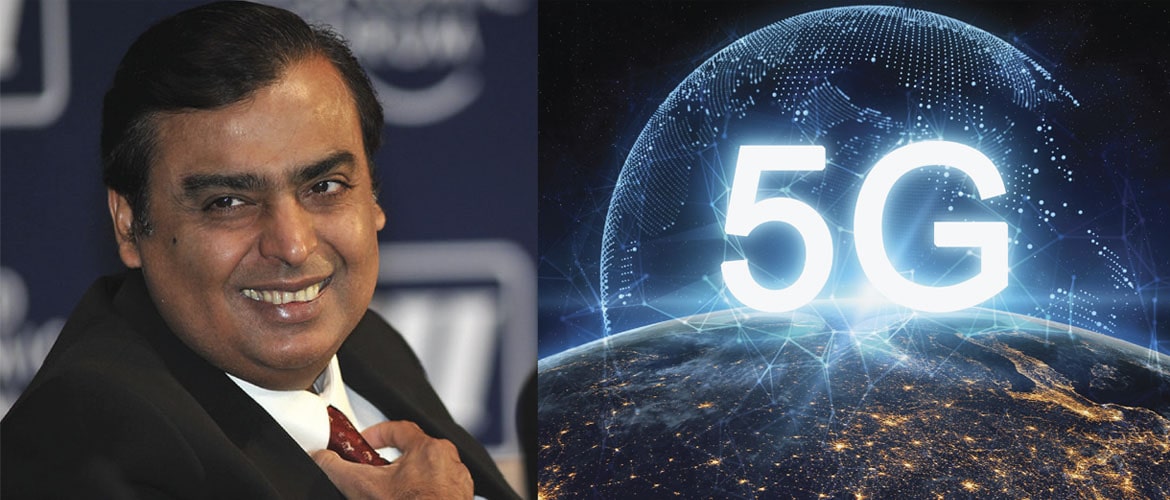Jio, the Lodestar of the Future
July 28, 2020 | Expert Insights

In late 2019, Reliance Jio donned the mantle of India’s No. 1 mobile services operator. Launched almost three years earlier, under the leadership of Mukesh Dhirubhai Ambani, CMD, the company claims an estimated 400 million subscribers. In the last three months and in the midst of the COVID-19 pandemic, the company has attracted approximately US$ 20 billion from 11 international investors, including U.S. majors Google, Facebook, Intel and Qualcomm, among others. With these developments, Mr. Mukesh Ambani (63), with an estimated personal wealth of US$ 72 billion, is now the 7th richest man in the world and the richest in Asia.
BUILT ON THE FOUNDATION OF FAILURE
Jio is the second telecom launched by Mr. Mukesh Ambani. The first, Reliance Communications, came into being in 2002, when his father, Dhirubhai Ambani, was still alive. However, in 2006, when the Reliance Group was split between the two brothers, Reliance Communications was awarded to his brother, Anil Ambani. After the split, Reliance Communications appeared to be doing well, but the CDMA and GSM technologies of 2G and 3G, were fast replaced by more efficient 4G, and will continue to face competition from emerging 5G. Further, the company amassed large debt, mainly from buying high-priced spectrum in auctions and began defaulting on payments. In August 2017, the Supreme Court of India ordered Reliance Communications to pay Ericsson, the Swedish telecom giant, US$ 75 million as outstanding dues. In February 2019, when the company failed to make the payment, Mr. Mukesh Ambani bailed out his brother by paying up on his behalf.
THE TRAJECTORY
Jio’s strategy is driven by an impressive techno-vision: to make mobile broadband internet available and affordable to customers, pan-India. Besides this impressive vision, its success story is built on three pillars. One, unlike Reliance Communications, Jio invested wisely in LTE Technology, which is scalable to new generations of technology. Second, Jio invested in optical fibre network (more than 250000 km) and 4G towers (90K), spanning all of India’s 23 telecom circles. Third, they adopted aggressive market strategies, including providing free data and free voice services, thereby disrupting the entire market with a price war, which most of its competitors could not sustain. Since its entry in 2016, its market share has progressively increased, achieving 11% in 2018 and 35% in 2020.
Analysis: According to Mr. Mukesh Ambani, Jio has created the world’s largest greenfield 4G-only LTE data network. Further, the network is also upgradable to 5G. According to Amitabh Kant, CEO of Niti Aayog, in 2018, India earned the distinction of becoming the world’s highest consumer of mobile data, larger than both U.S. and China combined.
Assessment: Three years of a price war and investment in infrastructure is likely to have increased Jio’s debt, in excess of US$ 21 billion. However, with the recent US$ 20 billion international investment, the strategy appears to have paid off.
WHY DOES RELIANCE JIO ATTRACT FOREIGN INVESTMENT?
In July 2020, Mr. Mukesh Ambani announced a made-in-India 5G technology solution, spanning telecom, e-commerce, retail, and enterprise solutions. Called the digital ecosystem, Jio has reportedly more than 20 startup partners with whom they have been working to create indigenous 5G capabilities. JioMeet and GeoGlass are two such apps, created to enhance conference and augmented-reality experiences on the smartphone.
Analysis: Despite these confident assertions, Jio mobile services continue to have complaints of quality, notably call drops, poor quality of service, and slow speed on networks.
Jio is only one of the six major business enterprises of the Reliance Industries conglomerate. The others involve energy, petrochemicals, textiles, natural resources, and retail. With a market capitalisation of US$ 150 billion, it is India’s largest company and was ranked 106th in the Fortune Global 500 list in 2019.
Assessment: Having built the infrastructure for mobile internet and secured the customer base (400 million), Jio appears to be doing what Reliance does best – forward and backward integration. Forward integration into banking, entertainment, and online retail; backward integration into 5G products and mobile networks. If successful, like Reliance Petrochemicals, Jio is set to dominate the entire digital supply chain.
CONCLUSION
For the last few years, Jio has been engaged in a price war with Airtel, Vodafone, and BSNL. With its recent equity sales to international investors, Jio now has the capacity to neutralise its existing debt (US$ 21 billion) and become a ‘zero-debt’ company. With this impetus, Jio is likely to diversify into new areas such as entertainment, e-commerce and IOT (Internet of Things). Jio’s vision is to increasingly involve with data and information and dominate the emerging digital landscape.
With the global backlash against China on account of the COVID-19 pandemic, Reliance Jio’s 5G products, if successful, are favourably positioned as a strategic alternative to Huawei.
The Reliance conglomerate is a closely-controlled family business. Family businesses, in general, use cash generated by their profitable ventures as their personal piggy bank, to use where they deem appropriate. In doing so, they blur the distinction between the firm and the family. In times of success, this unfettered power of family firms is celebrated, but when things go south, investor wrath and public pressure may force the lead entrepreneur to escape responsibility, as we have seen many times in India, most notably with liquor baron Vijay Mallya.
However, for the present, Mr. Mukesh Ambani is king because his disruptive entry into the telecom industry has provided the Indian customer with the lowest-priced mobile data and voice services in the world.
Author: Maj Gen Moni Chandi (retd), Chief strategic officer








Comments